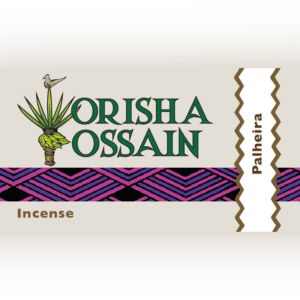Rapé Canela de Velho
From: €3,00
Experience the powerful effects of Rapé Canela de Velho, a sacred snuff that the Shanenawa tribe produces.
Descripción
Rapé Canela de Velho
- Rapé Canela de Velho comes from the small tribe of Shanenawa Indians in the Feijo region. This snuff suits more experienced individuals, as it accesses the deeper layers of our being.
- It targets three centers, mental, emotional, and physical, bringing grounding energy from the head down to the root.
- It works wonders for the root, solar plexus, and sacral chakras.
Medicinal Values
- Miconia albicans, a shrub species from the Melastomataceae family, thrives in both North and South America.
- For centuries, people have used Canela de Velho as a sacred remedy for chronic pains in the knees, spine, and joints.
- This plant remains a wonderful and sacred resource.
About Canela de Velho (Miconia albicans)
Miconia albicans, commonly known as Canela de Velho, is a shrub native to North and South America, particularly prevalent in the Amazon rainforest. Traditionally, indigenous communities have utilized various parts of this plant for medicinal purposes. In the context of tobacco snuff, Canela de Velho ash is incorporated into certain rapé blends, enhancing their therapeutic properties.
Rapé is a sacred snuff used by various indigenous tribes in the Amazon basin. It typically consists of finely ground tobacco mixed with ashes from specific plants, creating a potent blend with both physical and spiritual effects. The inclusion of Canela de Velho in rapé is valued for its anti-inflammatory, antioxidant, and analgesic properties, which contribute to the snuff’s overall healing and grounding effects.
The Huni Kuin tribe creates a powerful rapé called Canela de Velho, which blends Miconia albicans (Canela de Velho) with Sabiá mapacho. This combination offers potent healing benefits, including reducing inflammation and providing relief from joint pain. Miconia albicans and Sabiá tobacco work together in this rapé, not only serving as a medicinal remedy but also acting as a tool for spiritual purification and deeper connection. Many indigenous communities in the Amazon incorporate this sacred snuff into their rituals, making it an essential part of their cultural and spiritual practices.
In summary, Miconia albicans plays a significant role in the preparation of traditional tobacco snuffs, particularly rapé, by enhancing their medicinal and spiritual properties.
Climate and Rapé Quality
Proper storage is crucial to maintaining the quality of rapé. Humidity, temperature, and air exposure fluctuations will affect the product over time. For instance, in colder or drier regions, rapé can lose its natural moisture, becoming brittle and harsh to use. On the other hand, in areas with seasonal humidity or inconsistent storage conditions, it can still clump or develop mold if precautions aren’t taken. Regardless of where you live, investing in airtight containers, storing rapé in a cool and dark place, and monitoring humidity levels will ensure that its aroma, potency, and texture are preserved. Proper storage shows respect for the sacred nature of rapé and ensures that you’re receiving its full benefits every time you use it.
Tips to Preserve Snuff Quality
To ensure your Rapé Canela de Velho stays fresh and potent for as long as possible, especially in humid climates:
- Airtight Containers: Use containers with tight seals, such as screw-cap tins or vacuum-sealed jars, to minimize air exposure.
- Cool, Dark Storage: Store rapé in a cool, shaded area away from direct sunlight and heat sources. In tropical environments, consider using a climate-controlled storage space.
- Avoid Frequent Opening: Minimize the time the container is open to prevent exposure to fluctuating humidity and air.
Handling & Preparation of Rapé Canela de Velho
I sieve Rapé Canela de Velho and all other snuff in my shop using a 120-micron, high-grade stainless steel mesh. This meticulous process ensures:
- An exceptionally fine powder.
- Consistent fineness in every batch.
- Removal of unwanted particles.
- Optimal absorption and effectiveness.
To preserve quality, I store all rapé in dry, vacuum-sealed containers. These careful steps ensure every product meets the highest standards of freshness and effectiveness.
Maintaining Freshness and Potency
- The stockroom is always kept:
- Cool and dark to preserve the blend’s freshness and potency.
- Free from excessive moisture and humidity, which can quickly ruin rapé.
- I take extra precautions to:
- Protect rapé from heat, light, and air exposure.
- Keep everything organized for easy access and quality control.
Labeling Process
- I handle the labeling myself to avoid:
- Mislabeled products.
- Misplaced batches.
When someone orders rapé, they can trust they’re receiving exactly what they asked for. While I strive for perfection, I occasionally make small mistakes, but these are rare and will be corrected.
Handling New Stock
When new shipments arrive, I carefully transfer the rapé into proper containers. This minimizes unnecessary exposure to air or light. I also:
- Rotate stock regularly to ensure older batches are used first.
- Store rapé in vacuum-sealed containers to maintain its freshness and quality.
Respecting the Product
Handling rapé is not complicated, but it requires attention to detail. For me, it’s about respecting the product and ensuring it reaches customers in the best possible condition.
Armando, Shop Owner
Additional information
| Weight | N/A |
|---|---|
| Available in | 1 gram, 10 grams, 20 grams, 40 grams |





